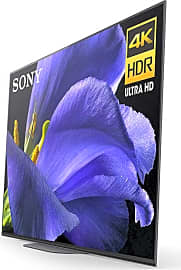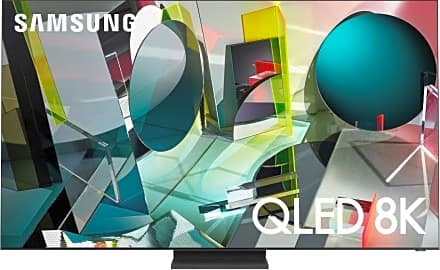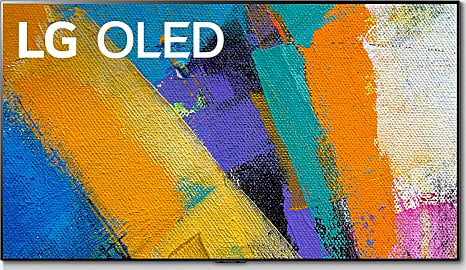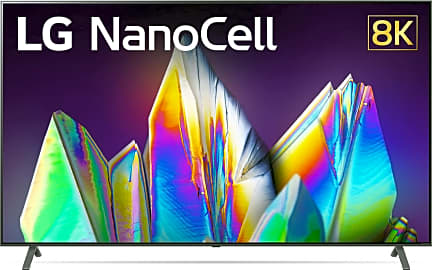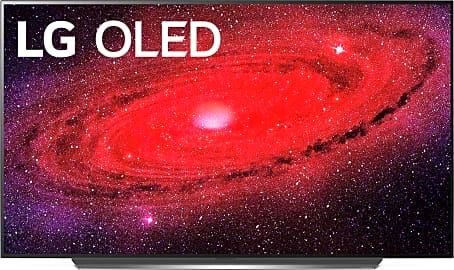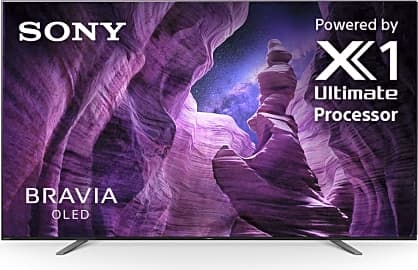The 9 Best Ultra Slim TVs

This wiki has been updated 30 times since it was first published in July of 2018. Whether you plan to mount your television on the wall or stand it on your entertainment center, the thinner it is, the better. Thankfully, modern display technology makes it possible to get a high-quality image out of incredibly compact equipment. These ultra-slim models will take up very little space while letting you enjoy movies, games, and TV shows in Ultra High Definition. When users buy our independently chosen editorial choices, we may earn commissions to help fund the Wiki.
Editor's Notes
July 15, 2020:
While OLED technology is still pretty expensive, there's no denying that it's the source of the majority of slim televisions on the market, as its self-illuminating diodes don't need those extra layers for a backlight array. There's still a need for speakers, inputs, and circuitry, however, which can result in TVs with incredible image quality that still measure too thick for many users.
In updating our list, we took a look at the latest releases from the top brands on the market, and held them to stringent standards, excluding any model measuring more than three inches deep. Some models came pretty close to that threshold, like the Samsung TU-8000, which, to be fair, isn't an OLED offering, making it an excellent choice for anyone on a budget who still wants something incredibly thin.
Others are almost too thin to believe, like the Samsung Q900T, which is an absurdly expensive QLED 8K option. Then there's the LG WX 65, which measures just 0.15 inches deep. It's an OLED model, but that doesn't account for its thinness alone. That's because LG took all that other hardware — the inputs, speakers, etc. — and separated them from the panel itself, connecting them by way of a high-quality soundbar that comes with the TV. Is it cheating to just remove all that for the sake of thinness? We don't think so, especially since so many people would opt for a soundbar as their primary speaker, or at least a source of the center channel in a 5.1 setup.
June 04, 2019:
If you're looking for the slimmest TV you can find, we've got you covered. Pretty much everything on our list right now is two inches thick or less at its thickest point. The only one that exceeds that is the Hisense H9e Plus, which is about 54 millimeters thick on the bottom. Sony's X930E is a bit more costly, but it has the quality you'd expect from the Japanese entertainment giant.
If you're okay with dropping a huge chunk of change, the Hisense laser projector is an awesome device that comes with a relatively high-quality sound system. Alternately, the Samsung Q900 is an 8K display, and while there aren't many movies out that can take full advantage of it, you can trust that it's extremely future-proof. But the LG W9 takes home the title of "slimmest TV", as both commonly available models are only 4 and 6 millimeters thick, excluding the external box that does allt he processing and houses a pair of speakers. Sony's A9G is a bit cheaper than all three of those and leverages a number of advanced technologies to deliver a super-rich OLED picture as well.
Closer to most people's budgets, LG's C9 is their most popular OLED model, and one of the top TVs on the market today. But you simply can't ignore Samsung's thinnest models. The Q90 is their most recent flagship, and it's a truly excellent TV, although some feel that it's inferior to the Q9FN from the year before. That particular top-of-the-line release is the most balanced, as it's surprisingly affordable, and is exactly one inch thick, no matter where on the unit you measure. Finally, The Frame by Samsung is a very interesting choice that streamlines the entertainment experience by turning your living room into an art gallery. Guests and family members will be impressed when the priceless Rembrandt on your wall turns into The Avengers in 4K at the touch of a button.
A Brief History Of TV Technology
Soon, digital media would overtake analog broadcasts and recordings, necessitating high-definition, high-refresh rate displays.
It's one of the most influential inventions ever, and it's been around for just a tiny fraction of humanity's existence. In 1927, Philo Taylor Farnsworth demonstrated the technology by transmitting the first live human images, and after 20 years of refinement, television became the next major medium for entertainment and mass communications. By the late 1940s, popular stations were broadcasting across the country, and as of 1955, 50 percent of all US families owned a television. This era, which would come to be known as the first Golden Age of Television, saw the birth of many movies and shows that are now regarded as classics. Television was ushered in as an entertainment necessity and TV news became a household convention.
As the decades rolled on, people changed the way they used their TVs. Around 1966, the general populace began to move on from monochrome, while the 1970s and 80s brought the adoption of cable and eventually recorded media, including the VHS tape. Most of the history of commercial television had been dominated by broadcasting and cathode ray tubes, but by the end of the century, DVDs and flat-screen TVs came onto the scene, and home theater was born. Many new technologies worked together to greatly improve the viewing experience, and engineers were off to the races, figuring out how to make everything bigger, clearer, and brighter. Soon, digital media would overtake analog broadcasts and recordings, necessitating high-definition, high-refresh rate displays. The next major player in large, cost-effective display panels was the flat-panel display.
The first flat screen was prototyped in the 1970s, but it wasn't until 1997, when Sharp and Sony entered a joint venture to produce flat-panel displays, that the concept would gain much more attention. The first generation used a plasma-addressed liquid crystal method that combined the strengths of plasma and LCD screens of the day. By 2006, lighting technology had progressed to allow engineers to mount the backlight directly behind the screen, resulting in the first modern LCD TVs. Those early models used cold-cathode fluorescent lamps, which were soon replaced with cooler and more energy-efficient LED arrays. All modern LCD TVs now use lightweight LED backlights; some have a layer directly behind the screen, called a direct-lit configuration, while others put the lights on the lower edge of the display, which cuts down on the unit's weight and thickness.
The Technology Behind A Slim TV
To understand how TVs can be so thin, first consider their most basic operating component, the pixel. In the case of an LCD, a pixel consists of a tiny aperture covered by color filters as well as a layer containing liquid crystal structures. Light passes through the hole, is dimmed or blocked completely by the liquid crystal, and then is colored by the appropriate filter. Commands, such as those relating to brightness levels and which filter to activate, are sent by a graphics processing unit across a thin-film transistor, which is just a bunch of super-thin, essentially see-through wires pressed onto a transparent plastic sheet. All the components that actually affect the backlight are designed to be as thin as possible, and the display itself has always been the thinnest part of a panel. It's taken advanced lighting technology to compress high-quality LEDs to the point where they barely add any thickness, either, resulting in the newest ultra-slim LCD TVs.
OLED panels, a popular yet more expensive option, use somewhat different technology to achieve what is, in many ways, a better image, and they can get even thinner than the thinnest LCD screens. Rather than shining a bright light through a matrix of liquid crystal, each OLED pixel is made up of subpixels that emit their own light, making OLED an emissive display technology. In high-density, low-power devices like smartphones, the display usually controls the individual red, green, and blue pixels independently, leading to the rich, vibrant colors found on many handheld devices. In larger, more energy-intensive devices such as TVs, an array of subpixels is used to produce white light, which is then sent through filters to achieve the intended color. Because there's no need for a thick and hot backlight, very little space is needed for all the components, and OLED TVs have always been thinner than their less-expensive competition.
How Low Can You Go?
No matter how slim of a TV you're looking for, you can find it. LG's 2017 Wallpaper TV, which was available in up to 77 inches, brought sub-one-centimeter displays to the mainstream — well, maybe not the mainstream, as they cost a boatload when released, but at least into the public eye. The same company introduced a rollable TV a few years later, illustrating the kind of innovations that OLED technology panels can allow. But while nothing can top the low weight, perfect blacks, and slim construction of an OLED TV, the fact remains that they're consistently more expensive than comparable LCD TVs.
No matter how slim of a TV you're looking for, you can find it.
The advancement of lighting technology, hardware processing methods like HDR and local dimming, and advanced color filtration methods such as quantum dot filtration all work to make those LCD TVs work better than ever, and in some aspects superior to OLEDs. Their raw brightness levels far exceed those of their organic-based competition, they don't suffer from image retention or diminished brightness, and they're considerably more affordable. Plus, there are many good choices that are only about an inch thick and are reasonably lightweight and easy to mount on the wall or a stand.
If you can afford it, you could always consider moving up to an 8K TV or high-end projector. That's some pretty expensive stuff, but it's great equipment in the right hands. Or if you're looking for something large and don't want to shell out a ton of cash, there are plenty of excellent large-format TVs on the market using both OLED and LCD technology. And you may want to look into antennas and other cord-cutting devices, so you'll never lose access to your favorite shows.



